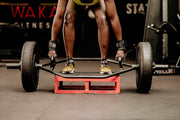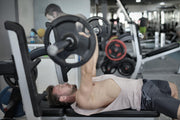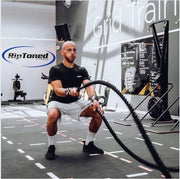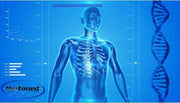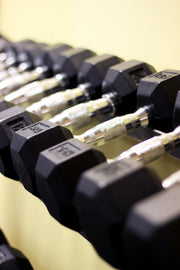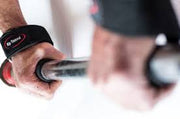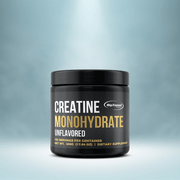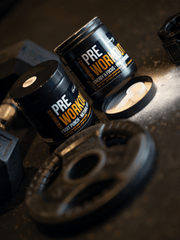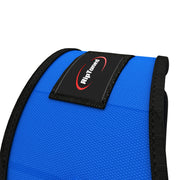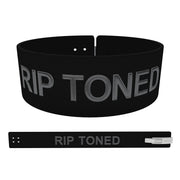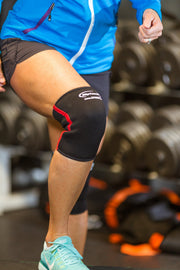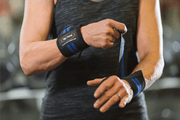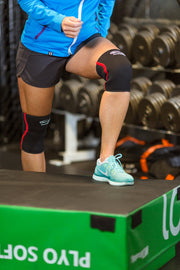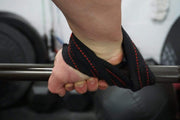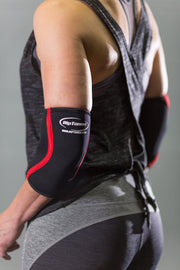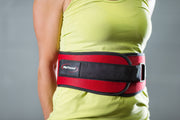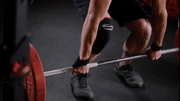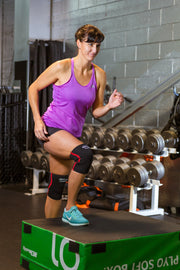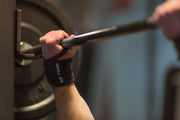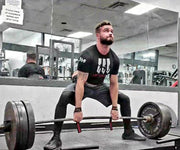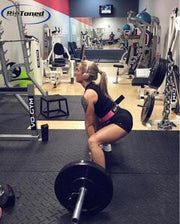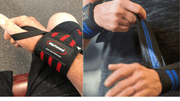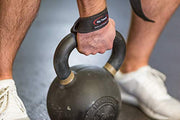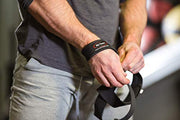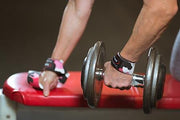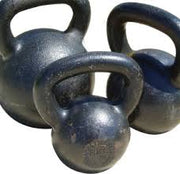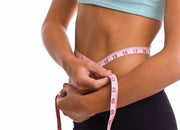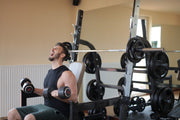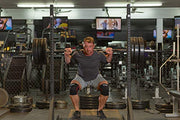Muscle strength is an essential component of physical health and performance, making it a vital aspect to consider in fitness and rehabilitation settings. It not only allows individuals to perform daily tasks with ease but also plays a significant role in sports performance and injury prevention. However, measuring muscle strength accurately can be challenging without proper knowledge and techniques.
This guide aims to provide a comprehensive overview of muscle strength testing and how it can help individuals reach their performance-based goals. From understanding the basics of muscle strength to learning various testing methods and interpreting results, this guide will equip you with the necessary knowledge to unlock your full potential.
Understanding Muscle Strength
Muscle strength refers to the ability of a muscle or group of muscles to generate force against an external resistance. It is influenced by various factors such as genetics, training, and age.
There are three types of muscle contractions that contribute to different aspects of muscle strength: concentric, eccentric, and isometric. Concentric contractions occur when the muscle shortens while producing force, such as when lifting a weight. Eccentric contractions occur when the muscle lengthens while producing force, such as when weight lowering. Isometric contractions occur when the muscle produces force without changing its length, such as holding a plank.
Muscle strength is often measured using various testing methods to assess specific muscle groups or overall strength. Some commonly used tests include the one-repetition maximum (1RM) test, hand grip dynamometer, and manual muscle testing. These tests provide valuable information on an individual's current level of strength and any imbalances or weaknesses that may need to be addressed.
The Importance of Muscle Strength Testing
Muscle strength testing is crucial for several reasons, especially those looking to improve their physical performance. Firstly, it provides a baseline measurement of an individual's current strength levels, allowing them to set realistic and achievable goals. It also helps track progress over time and identify areas for improvement.
Moreover, muscle strength testing can help prevent injuries by identifying any muscle imbalances or weaknesses that may put individuals at risk. By addressing these weaknesses through targeted exercises and training, individuals can better prepare their bodies for physical activities and reduce the risk of injury.
In addition to injury prevention, muscle strength testing can also help improve performance in sports and other physical activities. By identifying specific areas of weakness, athletes and fitness enthusiasts can tailor their training programs to address these weaknesses and ultimately enhance their overall performance.
Furthermore, muscle strength testing is essential in rehabilitation settings. It allows healthcare professionals to monitor an individual's progress and determine the effectiveness of their treatment plan.
A Comprehensive Guide To Muscle Strength Testing And Performance-Based Goal
There are various methods of muscle strength testing, each with its benefits and limitations. The most commonly used methods include:
One-Repetition Maximum (1RM) test
The 1RM test is a popular method of measuring an individual's maximum strength by determining the heaviest weight they can lift for one repetition. This test is commonly used in resistance training and bodybuilding to assess an individual's strength.
To perform this test, individuals should warm up with lighter weights and gradually increase the load until they reach their maximum limit. It is essential to maintain proper form and technique to ensure accurate results.
Plus, the 1RM test can be further modified to measure strength in specific muscle groups or movements using different exercises, such as back squats for lower body strength and bench press for upper body strength.
One drawback of this test is that it requires access to equipment such as barbells, which may not be readily available. Additionally, individuals with injuries or beginners may struggle with this test due to the high intensity.
Hand Grip Dynamometer
The hand grip dynamometer is a simple and convenient tool for measuring grip strength. This test involves squeezing the dynamometer with maximum force to measure the strength of the forearm muscles.
Grip strength is essential for various daily activities and sports, making this test useful for assessing overall upper body strength. It is also widely used in occupational settings to evaluate an individual's ability to perform tasks that require grip strength, such as manual labor jobs.
However, this test may not accurately reflect overall muscle strength, as it only measures grip strength and not the strength of other muscle groups. It is also limited to individuals with hand injuries or conditions that may affect their ability to grip properly.
Manual Muscle Testing (MMT)
MMT is a subjective test that involves a healthcare professional manually applying resistance to specific muscle groups while the individual performs a movement. The strength of the muscle is then graded on a scale from 0-5, with 0 being no muscle contraction and 5 being normal strength.
This test is commonly used in rehabilitation settings to assess an individual's progress and determine any muscle imbalances or weaknesses that need to be addressed. It is also useful in identifying specific muscles contributing to pain or dysfunction.
However, MMT results may vary depending on the examiner's experience and strength applied, making it less reliable compared to other testing methods. It is also not suitable for individuals with severe injuries or limitations in movement.
Isokinetic Dynamometer
The isokinetic dynamometer is a machine that measures muscle strength at a constant speed throughout the entire range of motion. This allows for accurate and consistent measurements, making it a reliable method for assessing overall muscle strength.
It also provides valuable information on an individual's muscular endurance and fatigue levels by measuring the force generated at different speeds.
However, this test requires access to specialized equipment and may not be readily available in all settings. It also tends to be more expensive compared to other testing methods.
Functional Movement Screen (FMS)
The FMS is a series of movement tests that assess an individual's ability to perform basic movements such as squatting, lunging, and pushing/pulling. It aims to identify any imbalances or limitations in movement that may increase the risk of injury.
This test is commonly used by athletes and fitness professionals to develop individualized training programs and prevent injuries. It can also be used in rehabilitation settings to monitor an individual's progress and determine when they are ready to return to their sport or physical activity.
However, one limitation of this test is that it does not directly measure muscle strength but rather movement patterns. It also requires trained professionals to administer and interpret the results accurately.
Electromyography (EMG)
EMG is a diagnostic tool that measures the electrical activity of muscles during contraction. By placing electrodes on the skin over specific muscles, healthcare professionals can assess muscle activation patterns and identify any neuromuscular deficiencies.
This test is commonly used in sports science and rehabilitation to assess muscle function and identify areas for improvement. It can also monitor an individual's response to training or treatment.
However, EMG testing may not be feasible in all settings due to the equipment required and the expertise needed to interpret results accurately. It also does not directly measure muscle strength but rather the electrical activity of the muscles.
Force Plate Analysis
Force plate analysis involves individuals performing various movements on a specialized platform that measures forces and pressures exerted by the body. This allows for a detailed assessment of an individual's balance, coordination, and power production.
This testing method is commonly used in sports performance to identify areas for improvement and track an athlete's progress. It can also be useful in rehabilitation settings to assess movement patterns and determine when an individual is ready to return to activity.
However, force plate analysis requires specialized equipment and trained professionals to administer and interpret the results accurately. It may also not be feasible or accessible in all settings due to its cost and complexity. Additionally, this test may not accurately reflect overall muscle strength as it primarily focuses on balance and coordination.
Why Testing is Important
Testing is a crucial aspect of fitness and rehabilitation as it provides valuable information on an individual's physical capabilities and limitations. By assessing muscle strength and function, healthcare professionals can develop personalized training or treatment plans to improve overall performance and reduce the risk of injury.
Moreover, testing allows for progress monitoring, essential for tracking improvements over time and adjusting interventions accordingly. It also helps identify any muscle imbalances or weaknesses that may lead to compensatory movements and potentially cause injury.
Furthermore, testing can provide valuable insights into an individual's readiness to return to activity or sport after an injury. By evaluating muscle strength and movement patterns, healthcare professionals can determine when an individual has regained sufficient strength and function to safely resume their physical activities.
Plus, regular testing can also help identify any changes or declines in muscle strength, which may be a sign of an underlying health issue. This allows for early detection and intervention, preventing further complications.
Explore simple, equipment-free strength testing methods for self-use
Now that you have learned about various strength testing methods, you may be wondering if there are any simple and equipment-free options for self-use. While these tests may not provide as accurate results as the ones mentioned above, they can still give you an idea of your general muscle strength.
Push-Ups
Push-ups are a classic exercise that can serve as a simple strength test. To perform a push-up, assume a plank position with your hands shoulder-width apart and lower your body until your chest touches the ground. Then, push yourself back up to the starting position.
The number of push-ups you can do in one go can give you an indication of your upper body strength. However, this test may not be suitable for individuals with wrist or shoulder injuries.
Plank Hold
The plank hold is another bodyweight exercise that can also serve as a strength test. It involves holding a plank position with your arms extended and your body in a straight line for as long as possible.
This test primarily assesses core strength and stability, but it also requires upper body and leg strength to maintain the position. If you are unable to hold a plank for at least 30 seconds, it may indicate a weakness in these areas.
Squats
Squats are another simple exercise that can be used as a strength test. To perform a squat, stand with your feet shoulder-width apart, lower your body by bending your knees, and then return to a standing position.
The number of squats you can do in one go can give you an idea of your lower body strength. However, this test may not be suitable for individuals with knee or hip injuries.
Single-Leg Balance Test
This test involves standing on one leg for as long as possible without losing balance. It primarily assesses ankle and lower leg strength, as well as balance and stability.
If you are unable to maintain your balance for at least 30 seconds on one leg, it may indicate a weakness in these areas. This test can also be modified by closing your eyes or standing on an uneven surface to make it more challenging.
Chair Stand Test
The chair stand test assesses lower body strength and mobility. To perform this test, sit on a chair with your feet flat on the ground, stand up without using your hands, and then sit back down.
The number of times you can do this in 30 seconds can give you an indication of your lower body strength and ability to move from sitting to standing. However, this test may not be suitable for individuals with lower body injuries or mobility impairments.
While these tests can provide a general idea of your muscle strength, it is important to note that they may not be as accurate as the methods mentioned earlier. If you have any concerns about your physical fitness or are recovering from an injury, it is always best to consult a healthcare professional before performing any strength testing.
Can Testing be Improved?
While current testing methods provide valuable information, there is always room for improvement. One challenge with traditional testing methods is the potential for human error and subjectivity, leading to inconsistent results.
Advancements in technology have allowed for the development of more objective and accurate testing methods. For example, computerized systems can now assess muscle strength and function with minimal human input, reducing the risk of error.
Additionally, there is ongoing research and development into new testing techniques that can provide a more comprehensive assessment of an individual's physical capabilities. This includes virtual reality-based testing and artificial intelligence-powered analysis, which may revolutionize the field of fitness and rehabilitation.
Moreover, incorporating multiple testing methods in a comprehensive evaluation may provide a more well-rounded understanding of an individual's strength and function. This can include combining traditional methods with newer technologies to provide a more accurate picture.
How much does testing cost?
The cost of testing can vary depending on the type of test, location, and expertise required. Traditional testing methods such as FMS and EMG may be more affordable than newer technologies like force plate analysis.
Additionally, the cost may also vary depending on whether the test is performed in a clinical setting or by a private fitness professional. In a clinical setting, the cost may be covered by insurance, whereas private testing may require out-of-pocket expenses.
Moreover, the complexity and duration of the test can also affect its cost. For instance, a comprehensive evaluation that includes multiple tests and advanced technology may have a higher price tag compared to a single traditional test.
Furthermore, the expertise required to administer and interpret the results accurately can also impact the cost. Tests that require specialized equipment or trained professionals may be more expensive.
Finally, location can also play a role in the cost of testing. Tests done in urban areas or large cities may be more expensive compared to those performed in rural or suburban settings due to differences in overhead costs.
Tips for Preparing for Testing
To ensure the most accurate results during testing, it is essential to properly prepare beforehand. This includes being well-rested and hydrated, wearing appropriate clothing and shoes, and avoiding strenuous physical activities before the test.
It is also helpful to communicate any injuries or health concerns with the healthcare professional conducting the test. They can modify the test accordingly or provide recommendations for further evaluation if necessary.
Additionally, it is crucial to follow instructions and give maximum effort during testing to obtain the most accurate results. This includes maintaining proper form and technique during exercises and not holding back due to discomfort or fear of failure.
Furthermore, it can be beneficial to keep a record of previous testing results for comparison and progress tracking. This can help identify areas for improvement and provide motivation to continue working towards fitness goals.
Lastly, it is essential to have a positive attitude and mindset when approaching testing. While it may be challenging, the results obtained can provide valuable insights into an individual's physical capabilities and serve as a guide for continued progress.
FAQs
How does engaging multiple muscle groups during workouts contribute to muscle growth and strength gains?
Engaging multiple muscle groups in your workouts, as opposed to focusing on isolation exercises, stimulates a broader range of muscle fibers, promoting more significant muscle growth and strength gains. This approach ensures a balanced increase in muscle mass and enhances overall athletic performance by encouraging the body to work as a cohesive unit.
Can resistance exercise influence both muscle size and body composition? How?
Yes, resistance exercise plays a crucial role in increasing muscle size and improving body composition. By challenging the muscle fibers with external resistance, the body adapts by thickening the muscle fibers, leading to muscle growth. Simultaneously, resistance training can boost metabolism and promote fat loss, resulting in a leaner body composition and more defined muscles.
What is the importance of training frequency in achieving strength training goals?
Training frequency is vital for maximizing strength training benefits, including muscle size and strength gains. Consistent and strategically planned workouts ensure continuous stimulation of muscle groups, allowing for ongoing adaptation and growth. Adjusting frequency based on goals, recovery, and individual capacity can optimize results and enhance muscle development and athletic performance.
How do muscle strength testing and performance-based goals interplay in designing an effective strength training program?
Muscle strength testing provides a quantifiable measure of your current strength levels across various muscle groups, serving as a baseline for setting performance-based goals. By understanding your strengths and weaknesses, you can tailor your strength training program to target specific areas for improvement, ensuring a balanced approach to muscle development and maximizing your potential for muscle mass increase and strength gains.
Conclusion
In conclusion, testing is a crucial component of fitness and rehabilitation that provides valuable information on an individual's physical capabilities and limitations. While current testing methods have their limitations, advancements in technology and the incorporation of multiple testing techniques can contribute to improving the accuracy and effectiveness of assessments.
Proper preparation for testing is also important to obtain reliable results. By understanding the benefits and potential improvements in testing, individuals can utilize this tool to achieve their fitness goals and reduce the risk of injury.
So, it is highly recommended to incorporate regular testing into one's fitness routine for optimal performance and overall well-being. As technology continues to advance, we can expect even more improvements in testing methods, making it an integral part of physical health assessment and management.

You May Also Be Interested In:


